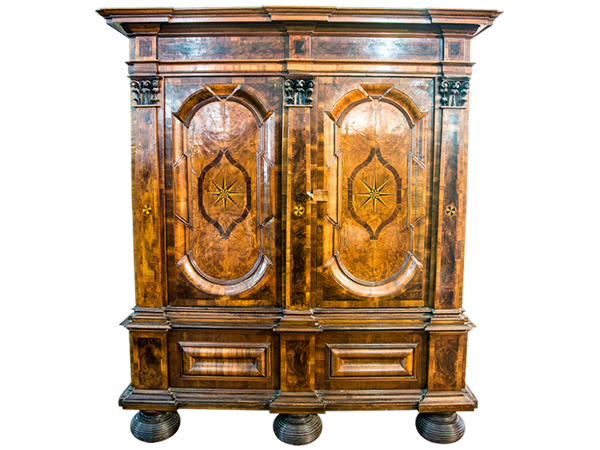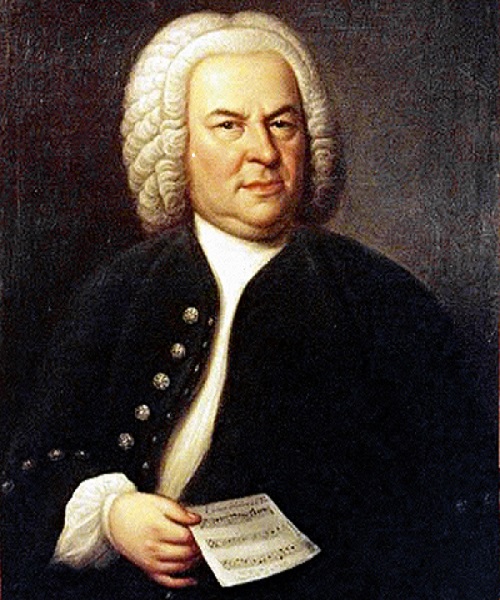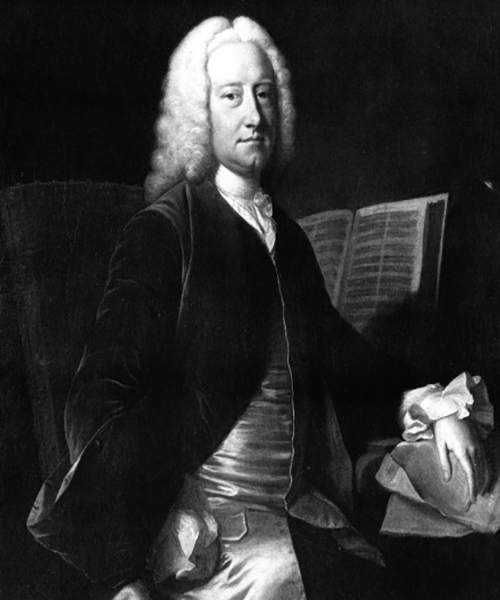
Baroque

Johann Sebastian Bach (31 March 1685 – 28 July 1750) was a German composer, organist, harpsichordist, violist, and violinist of the Baroque period. He enriched many established German styles through his skill in counterpoint, harmonic and motivic organisation, and the adaptation of rhythms, forms, and textures from abroad, particularly from Italy and France. Bach's compositions include the Brandenburg Concertos, the Mass in B minor, the The Well-Tempered Clavier, his cantatas, chorales, partitas, Passions, and organ works. His music is revered for its intellectual depth, technical command, and artistic beauty.
Bach was born in Eisenach, Saxe-Eisenach, into a very musical family; his father, Johann Ambrosius Bach, was the director of the town musicians, and all of his uncles were professional musicians. His father taught him to play violin and harpsichord, and his brother, Johann Christoph Bach, taught him the clavichord and exposed him to much contemporary music.Bach also went to St Michael's School in Lüneburg because of his singing skills. After graduating, he held several musical posts across Germany: he served as Kapellmeister (director of music) to Leopold, Prince of Anhalt-Köthen, Cantor of Thomasschule in Leipzig, and Royal Court Composer to August III. Bach's health and vision declined in 1749, and he died on 28 July 1750. Modern historians believe that his death was caused by a combination of stroke and pneumonia.
Bach's abilities as an organist were highly respected throughout Europe during his lifetime, although he was not widely recognised as a great composer until a revival of interest and performances of his music in the first half of the 19th century. He is now generally regarded as one of the main composers of the Baroque period, and as one of the greatest composers of all time.
The Sonatas and Partitas for solo violin (BWV 1001–1006) are a set of six works composed by Johann Sebastian Bach. They are also called the Sonatas and Partias for solo violin, in accordance with Bach's original terms: "Partia" was common in German-speaking regions during Bach's time, whereas the Italian "Partita" was introduced to this set in the 1879 Bach Gesellschaft edition, having become standard at that time.The set consists of three sonatas da chiesa, in four movements, and three partitas (or partias), in dance-form movements.

Johann Sebastian Bach (31 March 1685 – 28 July 1750) was a German composer, organist, harpsichordist, violist, and violinist of the Baroque period. He enriched many established German styles through his skill in counterpoint, harmonic and motivic organisation, and the adaptation of rhythms, forms, and textures from abroad, particularly from Italy and France. Bach's compositions include the Brandenburg Concertos, the Mass in B minor, the The Well-Tempered Clavier, his cantatas, chorales, partitas, Passions, and organ works. His music is revered for its intellectual depth, technical command, and artistic beauty.
Bach was born in Eisenach, Saxe-Eisenach, into a very musical family; his father, Johann Ambrosius Bach, was the director of the town musicians, and all of his uncles were professional musicians. His father taught him to play violin and harpsichord, and his brother, Johann Christoph Bach, taught him the clavichord and exposed him to much contemporary music.Bach also went to St Michael's School in Lüneburg because of his singing skills. After graduating, he held several musical posts across Germany: he served as Kapellmeister (director of music) to Leopold, Prince of Anhalt-Köthen, Cantor of Thomasschule in Leipzig, and Royal Court Composer to August III.Bach's health and vision declined in 1749, and he died on 28 July 1750. Modern historians believe that his death was caused by a combination of stroke and pneumonia.
Bach's abilities as an organist were highly respected throughout Europe during his lifetime, although he was not widely recognised as a great composer until a revival of interest and performances of his music in the first half of the 19th century. He is now generally regarded as one of the main composers of the Baroque period, and as one of the greatest composers of all time.
The Sonatas and Partitas for solo violin (BWV 1001–1006) are a set of six works composed by Johann Sebastian Bach. They are also called the Sonatas and Partias for solo violin, in accordance with Bach's original terms: "Partia" was common in German-speaking regions during Bach's time, whereas the Italian "Partita" was introduced to this set in the 1879 Bach Gesellschaft edition, having become standard at that time. The set consists of three sonatas da chiesa, in four movements, and three partitas (or partias), in dance-form movements.

George Frideric Handel (23 February 1685 – 14 April 1759) was a German-born British Baroque composer famous for his operas, oratorios, anthems and organ concertos. Born in a family indifferent to music, Handel received critical training in Halle, Hamburg and Italy before settling in London (1712) as a naturalized British subject in 1727. By then he was strongly influenced by the great composers of the Italian Baroque and the middle-German polyphonic choral tradition.
Handel is regarded as one of the greatest composers of all time, with works such as Water Music, Music for the Royal Fireworks and Messiah remaining popular. Handel composed more than forty operas in over thirty years, and since the late 1960s, with the revival of baroque music and original instrumentation, interest in Handel's operas has grown.
The Music for the Royal Fireworks is a wind band suite composed by George Frideric Handel in 1749 under contract of George II of Great Britain for the fireworks in London's Green Park on 27 April 1749. It was to celebrate the end of the War of the Austrian Succession and the signing of the Treaty of Aix-la-Chapelle in 1748.The performing musicians were in a specially constructed building that had been designed by Servandoni, a theatre designer. The music provided a background for the royal fireworks that were designed by Thomas Desguliers. Music had been performed publicly six days earlier, on 21 April 1749.
The Water Music is a collection of orchestral movements, often published as three suites, composed by George Frideric Handel. It premiered on 17 July 1717 after King George I had requested a concert on the River Thames.
The Water Music is scored for a relatively large orchestra, making it suitable for outdoor performance. Some of the music is also preserved in arrangement for a smaller orchestra: this version is not suitable for outdoor performance, as the sound of stringed instruments does not carry well in the open air.

